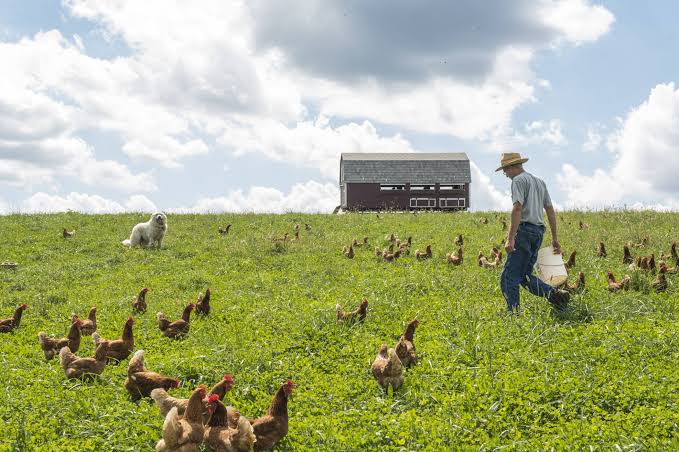Sustainable Poultry Production
Ecological basis
Poultry, including laying hens, meat chickens, turkeys, and ducks, are key in sustainable food and agriculture. Poultry are efficient convertors of feed to meat or eggs. They enable cycling of nutrients through feed, manure, and soil. For climate mitigation, it is important to reduce the use of fossil fuels in agriculture in order to reduce greenhouse gases. Depending on how birds and feed are raised, poultry production can be carbon neutral. Compared to grazing animals, poultry do not produce significant amounts of the greenhouse gas, methane, during digestion. Poultry are raised on large, mid, and small-scales around the world.
The type of feed has an important role in sustainability. Poultry are typically fed grains and pulses, such as corn and soybeans crops. The use of soil-building methods to raise crops, such as no-till, crop rotation, cover cropping, can help keep carbon sequestered in the soil. Manure from the birds can be used to fertilize feed crops, especially when raised on the same farm as the birds. Or poultry can be fed by-products, such as fruit pulp or cull crops, to increase nutrient cycling. Insects raised on crop and food residues can also provide sustainable feeds for poultry.
Read also: Successful business tips- marketing strategy for poultry
Increasingly, laying hens are raised cage-free, which provides freedom of movement. Meat chickens are typically raised on the ground, which is covered with shavings or other litter to absorb the manure. Poultry houses are climate-controlled and are energy-intensive; however, sources of renewable energy, such as solar heating, GAHT, and natural ventilation can reduce energy from fossil fuels. Providing outdoor access can be an enrichment for birds, provide increased space, and range, particularly fresh forage, can contribute to nutrients.
 Learn More
Learn MoreBird genetics can be adapted to the production system. Ex. fast-growing meat chickens efficiently convert feedstuffs to meat; slow-growing meat chickens tend to forage in systems with outdoor access. A variety of hybrids and breeds, including standard breeds, help increase biodiversity and can be bred to be adapted to local conditions.
Holistic approaches focus on how the health of animals is integrated with the health of the environment and people. Bird health can be maintained with practices that prevent the introduction of disease, such as biosecurity and vaccination. Increasingly, poultry producers raise birds without the routine use of antibiotics. Medically-important antibiotics are only used under the supervision of a veterinarian to treat disease. Animal welfare guidelines help ensure the physical and mental well-being of farm animals.
Processing and slaughter processes tend to use a lot of energy and water. Increasingly, processing facilities focus efforts on renewable energy and energy efficiency to reduce the impact on the environment. Waste from production or processing can be integrated in sustainable systems, such as composting for organic matter. Smaller, more numerous facilities may reduce bottlenecking, such as seen during the pandemic.
Livestock and poultry production increase the ecosystem services provided by our working lands, such as nutrient cycling. Animals also help provide diversity on farms, which is key in resilience.
Read also: Trends in the Poultry farm sector
Poultry production can support the United Nations Sustainable Development goals of ending hunger, increasing economic prosperity, and promoting social justice. However, there are many sustainability issues.
For more information and updates join our WhatsApp group HERE
Like our page on Facebook HERE











